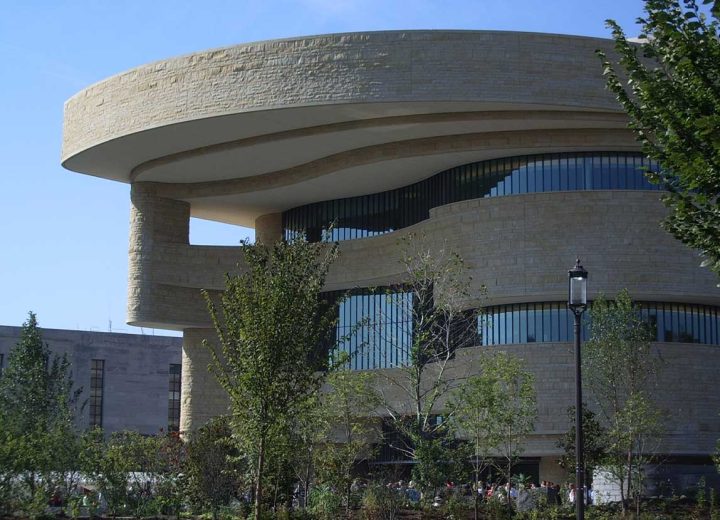National Museum of the American Indian
Smithsonian Institution
New Construction Consultation and Water Feature Rehabilitation
Completed in 2004, the National Museum of the American Indian (NMAI) is the first national museum dedicated solely to the life, culture, and history of Native Americans. Designed to evoke natural rock formations, the building’s curving facade is clad in golden limestone. The design was influenced by a collaborative team of Native American tribespeople, who led the way in creating a museum and performance space that speaks of the relationship of Native communities to the environment.
During the original construction of the museum, Hoffmann Architects + Engineers served as the building enclosure consultant, providing specialized roofing and waterproofing review and field observation. Our design professionals evaluated building walls during construction to see that installation conformed to design documents, and we reviewed detail and shop drawing submittals for technical accuracy. At site visits to review the quality of work, Hoffmann evaluated vapor barrier application, foundation waterproofing, roofing installation, flashing details, insulation attachment and layout, vertical waterproofing, detailing at penetrations, and masonry ties and angles, among other areas.
Preventive waterproofing consultation helped NMAI correct design and construction errors prior to the installation of the stone cladding and before leaks could threaten the integrity of the new building. With the right waterproofing and roofing systems in place from the start, the museum improved resiliency and durability.
Outside the scope of Hoffmann’s initial building enclosure consultation, the exterior water feature at NMAI is a simulated wetland that uses captured rainwater from the building roof to replicate a natural waterway. Over time, water began to infiltrate interior lower-level spaces adjacent to the water feature, including the windows of the café. Hoffmann partnered with Hartman-Cox Architects to diagnose and resolve the causes of leaks. Following a comprehensive study including exploratory probes, Hoffmann recommended a program of repairs. The Smithsonian expanded the scope to include improvements to the storm water drainage system in the amphitheater area, where heavy rain events overloaded drains and clogged perforated stone pavers. Our architects and engineers provided design through contract administration services for the water feature and drainage system rehabilitation project.
After opening to the largest gathering of Native American communities in history, the NMAI has grown to house the most extensive collection of Native American art and artifacts in the world. To protect these invaluable objects for future generations, the Smithsonian entrusted the weather integrity of the museum’s building enclosure systems to the exterior experts at Hoffmann.
